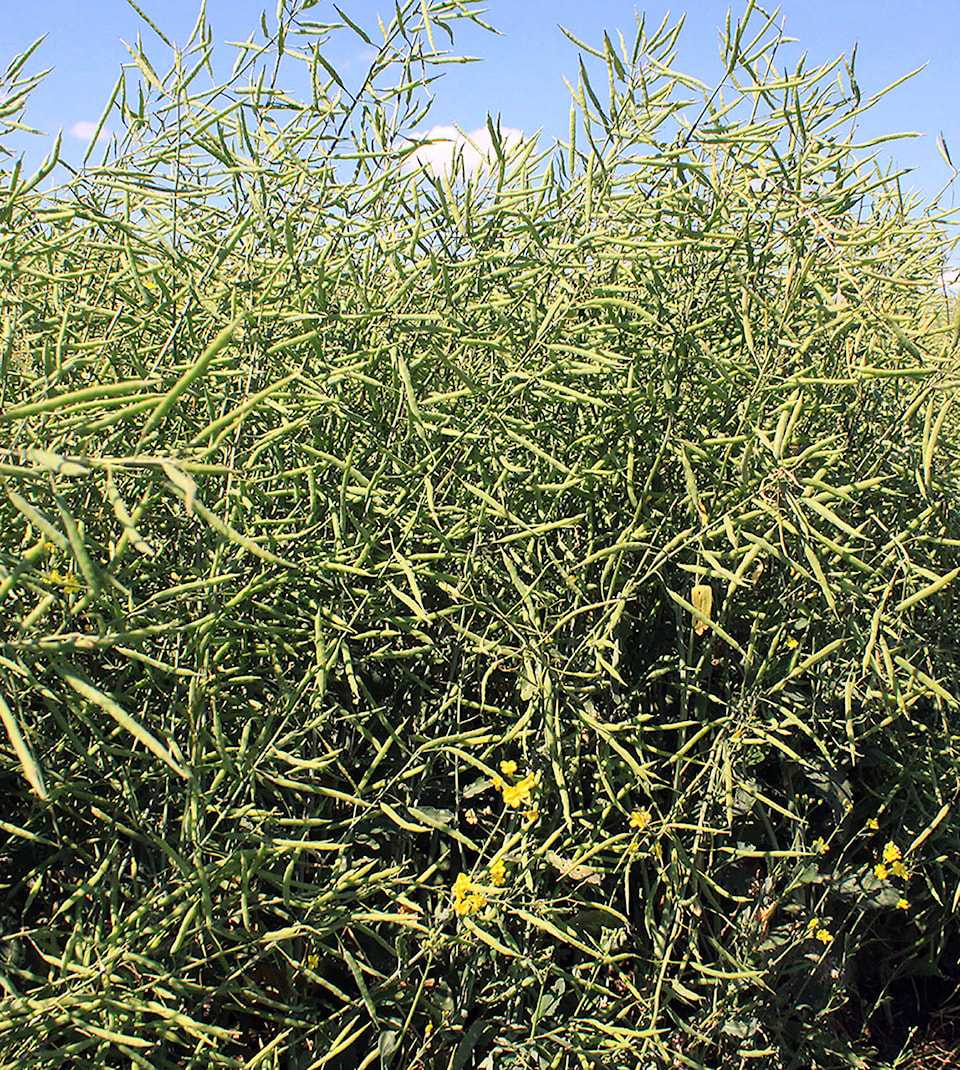Some fields are nearly ready, some need some time and others won’t be worth the bother.
That’s the kind of mixed bag of activity farmers across central portions of the province face for the rest of the month, according to Alberta Agriculture and Forestry (AAF).
“A lack of moisture combined with the heat wave has seen some crops mature quicker,” said Harry Brook, AAF crop information specialist, who added one can bank on harvest in the area beginning early this year.
“Already, we are seeing peas being sprayed so I anticipate harvest for them starting within a week, that’s about seven to 10 days earlier than normal. Peas, and canola, are not deep rooted like cereals so the rain the region has received lately won’t really affect their development much. That said, I can see a long drawn out harvest this season with some farmers hoping for a long open fall to get everything in.”
Across the region, Brook explained that lower than expected yields have some producers leaning toward baling or turning some fields into silage.
“Crops that have been stressed from lack of moisture, especially those that were seeded late, will see significant yield loss,” he stated.
“Canola for sure will have smaller seeded plants given the smaller length of flowering time, due to the extreme heat and moisture stress conditions. That will likely mean about 30 to 40 bushels per acre as opposed to the usual 60.”
Some cereals, such as rye and winter wheat, have already been swathed.
Meanwhile, the first cut hay crop has been nearly completed with an average yield of about 1.4 tons per acre on dryland and irrigated land bringing 2.2 tons per acre.
Brook stated the quality of the first cut is excellent, but that the low amount of moisture will create an issue for those hoping to get off a second cut this season.
“With such little rain, the big issue will be for those dairy producers trying to find really good quality second cut hay, which will likely translate into higher prices for that product this year,” he added.
Provincially, crop condition ratings continued to decline with only 56 per cent reported in good to excellent, down 14 per cent from the five-year average.
Harvesting has begun in the south, while northern areas are at least a few weeks away. To date, about four per cent of the crop is in the bin and three per cent swathed.
